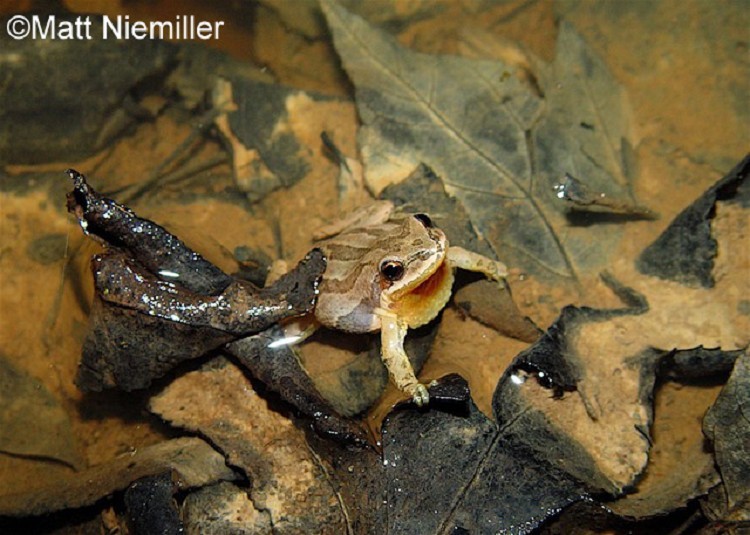Upland Chorus Frog
Pseudacris feriarumA secretive species with an extremely variable pattern, the Upland Chorus Frog is a denizen of grassy swales, moist forests, and river-bottom swamps.
Description:
From 0.7 to 1.4 inches in length, the Upland Chorus Frog is usually tan to light brown with three darker strikes (sometimes broken) running down its back. A dark triangle, or the suggestion of one, is usually present between the eyes.
Similar Species:
The Mountain Chorus Frog, which occurs with the Upland Chorus Frog on the Cumberland Plateau, has markings on its back suggesting reversed parentheses.
Voice:
The call is short, raspy, and rises in pitch. It sounds like someone dragging their thumbnail over the teeth of a comb.
Habitat:
Upland Chorus Frogs are found in swampy areas of broad valleys, grassy swales, moist woodlands, and around heavily vegetated ponds. They are present across the state except in the highest elevations of the eastern mountains.
Diet:
Small insects and invertebrates make up the diet of this species.
Breeding information:
Breeding sites are usually shallow temporary pools formed in flooded pastures with emergent vegetation and grassy margins. Females deposit up to 1,000 eggs attached to vegetation in the water. Eggs hatch in 3 to 4 days and the tadpole stage lasts about 60 days.
Status in Tennessee:
Common though rarely seen.
Fun Facts:
•The Upland Chorus Frog is the earliest breeding frog in Tennessee
•In its northern range the Upland Chorus Frog is found in upland habitat, but in the southern portion it is found in lowlands too
Best places to see in Tennessee:
Found statewide
For more information:
LEAPS Consulting web site on frogs and toads
